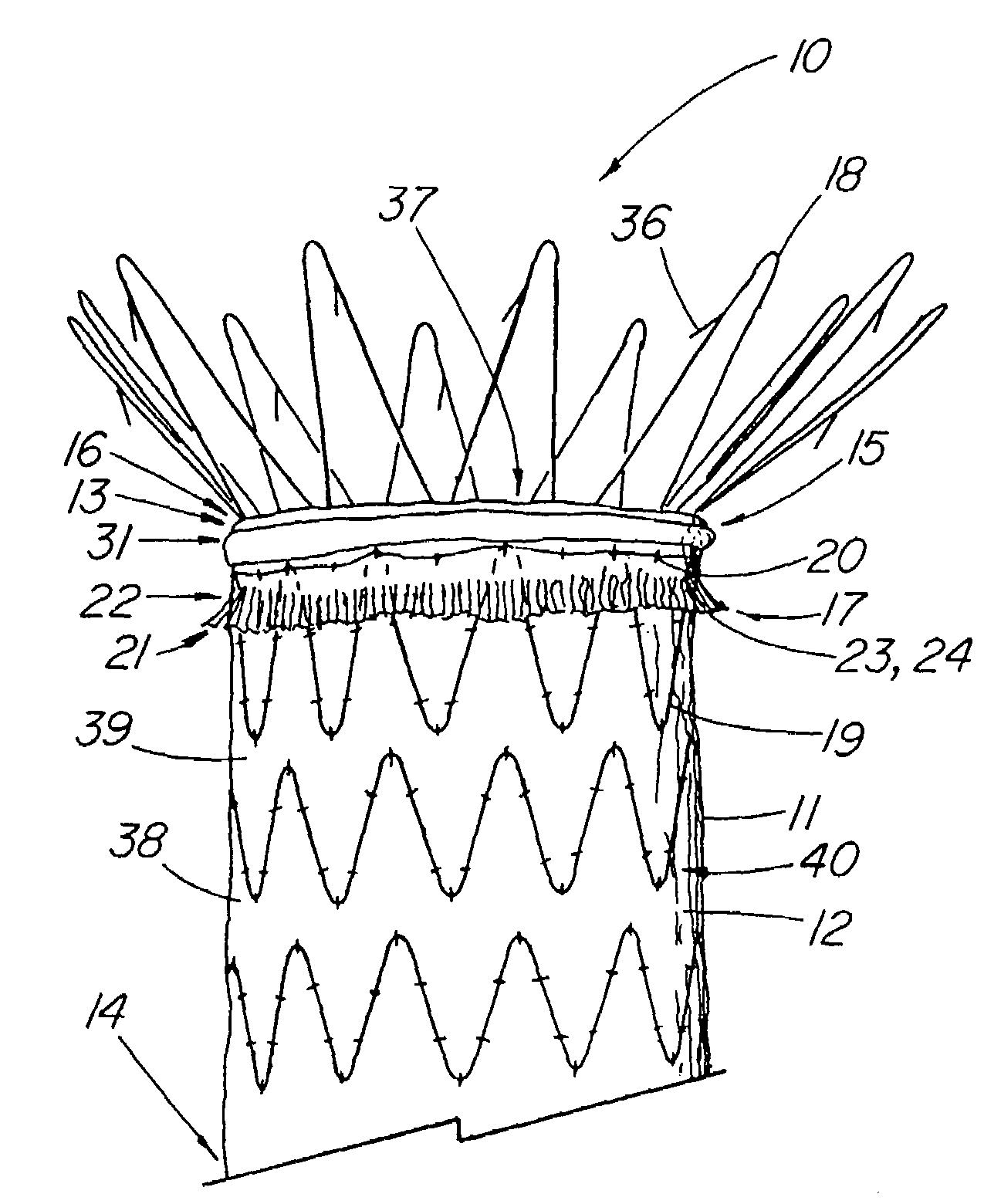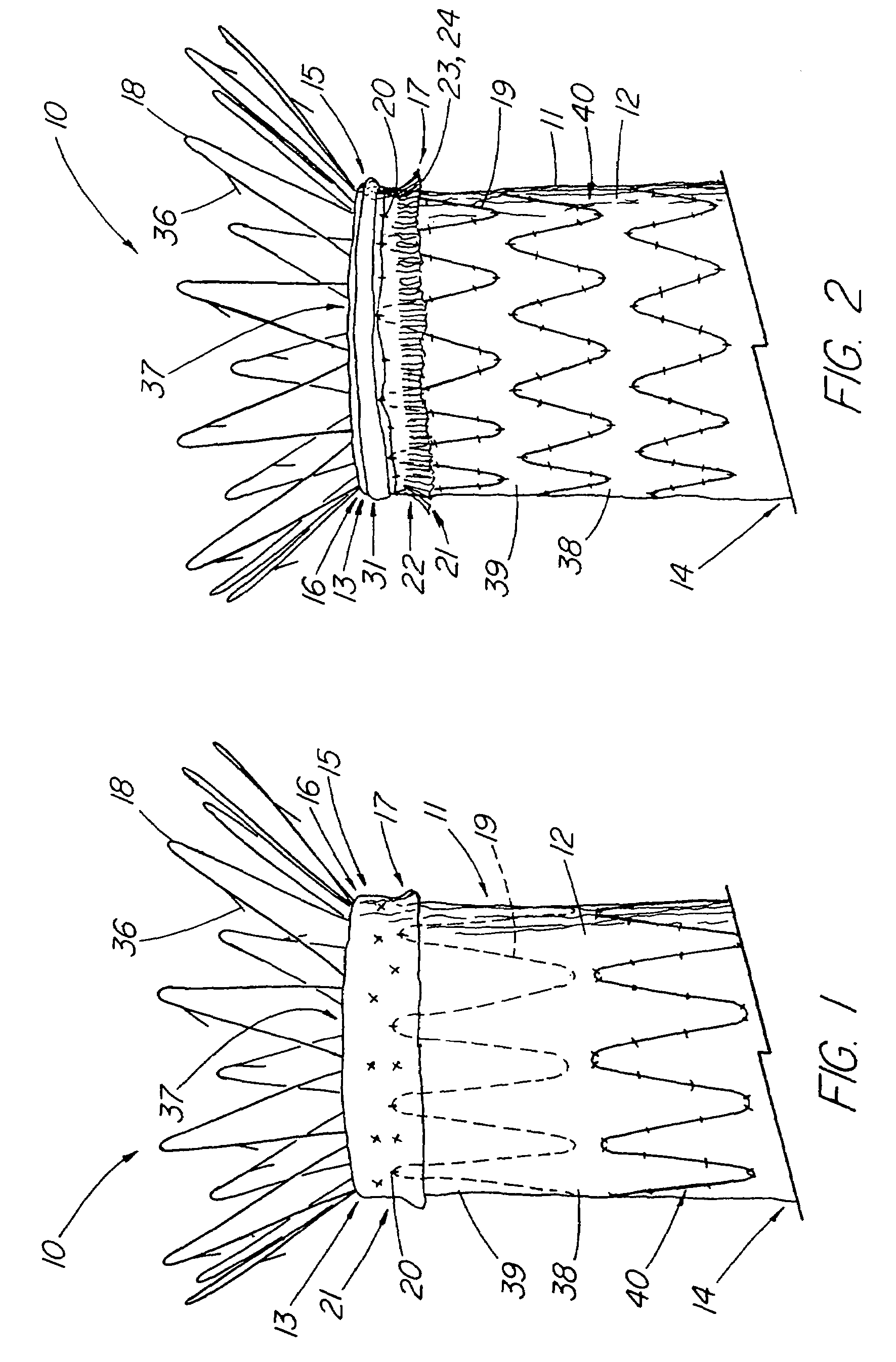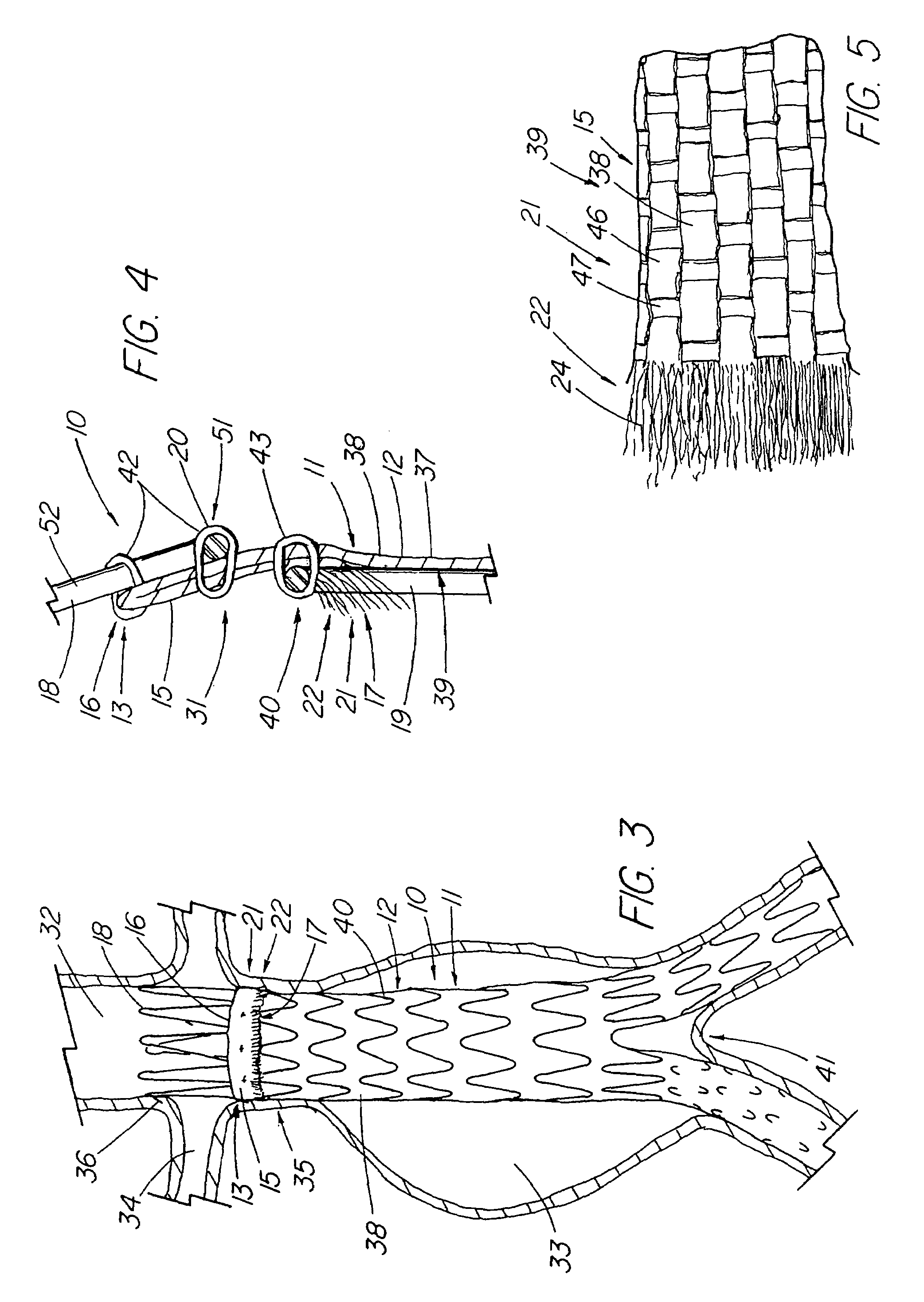[0006]The foregoing problems are solved and a technical advance is achieved in an illustrative intraluminal
prosthesis, such as a stent graft, made of a sleeve of material (e.g., a tight-mesh fabric, extruded
polymer, and / or a
biomaterial) which includes a
leading edge portion having an external structure configured to prevent anchoring stent detachment and / or leakage of blood or fluids around the
graft portion. In one aspect of the invention, the stent graft includes a proximal cuff portion to which at least the proximal stent may be attached, thereby providing at least a first and second layer of material that helps provide a more secure substrate for the attached stent(s). The double layer is more likely to hold the sutures and keep them intact, as well as being less likely to have a portion of the stent wear through the fabric over time. A first illustrative embodiment comprises a stent graft adapted for use in treating an
aortic aneurysm, such as the
ZENITH® AAA Endovascular Graft, in which the most proximal stent extends beyond the proximal or top edge of the graft potion to help anchor the stent graft in the vessel. The prosthesis is placed at or above the iliac bifurcation with the proximal stent acting as a suprarenal stent, attaching to the healthy portion of the
aorta about and above the openings to the renal arteries. Because this particular stent typically is only attached about the distal bends and strut portions, there are relatively few sutures to anchor the stent to the material. The cuff of the present invention gives a double-thickness layer of graft material, such as DACRON®
polyester fiber (
trademark of EI duPont de Nemours & Co., Inc.) for holding the sutures intact and providing better assurance that the distal bends or struts of the zig-zag stent will not wear through the fabric, creating a hole or causing detachment of the suprarenal stent at that point.
[0007]The stent adjacent to the proximal anchoring (suprarenal) stent may also be partially attached to the cuff as well. The proximal stent can be sewn to the cuff from the inside or the outside of the graft, preferably, but not necessarily to both the main body and cuff portions. Additionally, the stent can be sewn to the graft material's folded or
leading edge such that the stent and graft material generally abut one another. This reduces thickness by not having the struts of the stent overlapping the material. Furthermore, the cuff can comprise a separate piece of the same or a different material that is sewn, bonded, applied, or otherwise attached to the main body of the graft with the anchoring stent or other supporting structure being attached to both
layers to provide added support. While the cuff preferably encircles the entire circumference of the main body of the graft, it is within the scope of the invention (and definition of the term ‘cuff’) to include a series of discrete cuff ‘flaps’ or patch-like elements distributed around the circumference of the main body as points to which the bends or struts of the anchoring stent or other supporting structure are attached.
[0009]In another aspect of the invention, the cuff, which comprises a first edge at the leading or folded edge of the graft extending to second edge that comprises the free or
cut edge of the material, is adapted to extend outward to serve as an external sealing zone to engage the vessel wall and help prevent leakage of blood or fluid around the device. In one illustrative embodiment of a modified
ZENITH® AAA Endovascular Graft, approximately 10 mm of the graft material is folded over on itself such that the
free edge is on the outside of the graft. Approximately the distal 5 cm of the cuff includes a region in which the threads and fibers of the DACRON®
polyester fabric have been at least partially separated from one another to create a frayed region that extends outward from the graft and facilitates sealing by encouraging
thrombus formation and
tissue ingrowth. Graft material, such as DACRON®
polyester fiber, is particularly well-suited to form
thrombus. One
advantage of the external sealing zone is that the top or first supporting stent, which has the ability to compromise the quality of the graft-vessel seal if placed on the outside of the graft (such as is the case with the
ZENITH® AAA Endovascular Graft), can be moved from the inside to the outside of the graft and still allow for adequate sealing. This allows the inner lumen of the graft to remain smooth and stent-free. In a variation of this embodiment, the frayed region is folded or otherwise directed so that it extends proximally, thereby creating a third layer of graft material along the first edge of the cuff. Additionally, the frayed region can be modified to enhance its sealing properties, such as by adding agents to encourage
thrombosis or
cell proliferation, adding structure capable of stimulating the
cell injury response and facilitate
tissue ingrowth.
 Login to View More
Login to View More  Login to View More
Login to View More 


